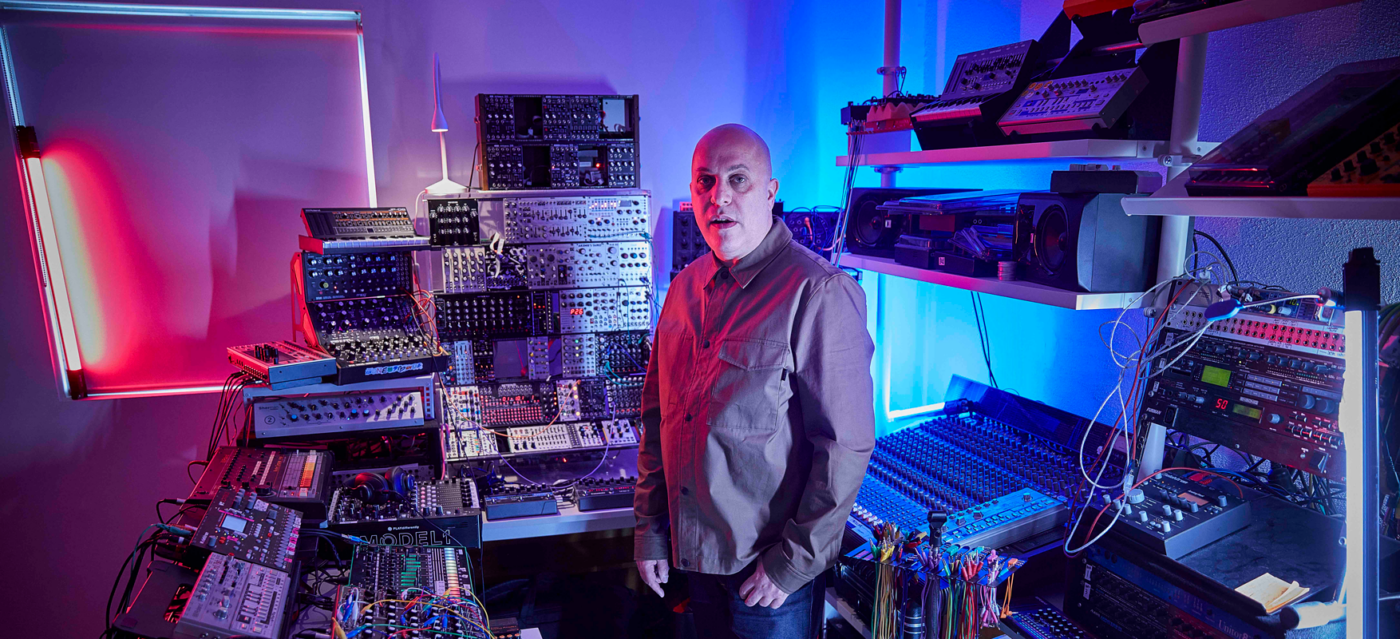“Why the fuck are people still asking which one is the closest to the original (TB-303). Are people conducting science examinations or making music?” Honeysmack takes no prisoners and shows us his staggeringly cool studio.
Dr David Haberfeld is Honeysmack the ‘doctor of live acid techno’. If you’re going to do a doctorate in acid techno then it was only going to be a matter of time before you end up on the hallowed pages of Attack Magazine…
His dynamic performances and productions are purely hardware-based and centre on Roland’s iconic
machines of the 1980s including the TB-303, TR-909 and TR-808. These machines were pivotal in the
development of electronic music, and David continues to explore new contexts with these vintage
machines with a mix of new hardware and modular synthesis.
There are no laptops. There are no records. There is no CDJ. There are no USBs. This is not DJing. This is
live acid techno performed and produced in the moment.
We booked an appointment with the good doctor to show us his incredible studio in Melbourne.
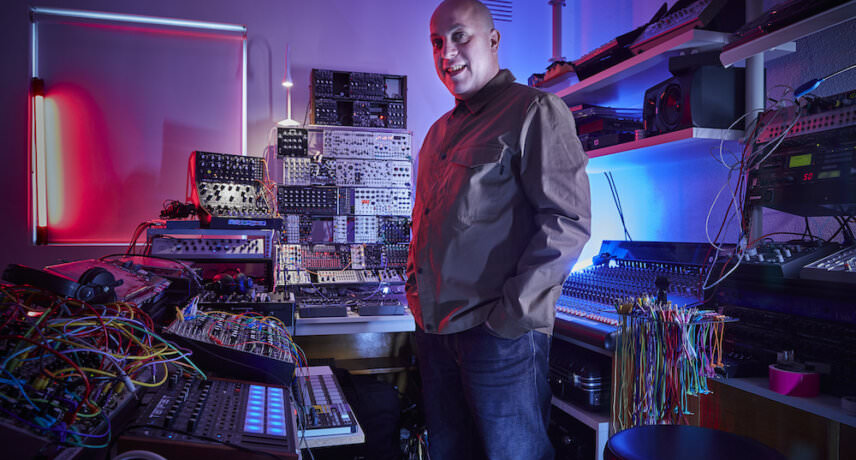
Honeysmack
Hi Attack!
My studio is more than just a facility to record, it is what I label as “my studio instrument”.
Most music technology is marketed or sold as instruments, whereas I see each drum machine, synthesizer, mixer, effects unit, sync box and everything else within my studio, I consider a module within my studio instrument.
Therefore, the mixer is just as integral to performing and composing just like a particular synth or drum machine.
I’ve amassed my studio over the last three decades. I was fortunate when I started producing and performing in the early 1990s, it was the time when electronic dance music was forming. We primarily bought and used gear that was cheap, not because of their sound, it was typically affordability over sound or function. Computers were relatively expensive those days too, and they were only MIDI sequencers, manipulating audio required even more computer power.
The first serious piece of gear I bought was an Ensoniq ASR-10 keyboard, because I could sample and sequence everything internally and effectively produce an entire track. This was a time before I had a computer and this is the approach I continue to adopt today.
I use a bunch of gear synchronized and play sequencers off one another. I do not use a computer to sequence, the DAW is more of a tape recorder. I love outcomes that are created by combining different layers of sequencers, sounds and rhythms.
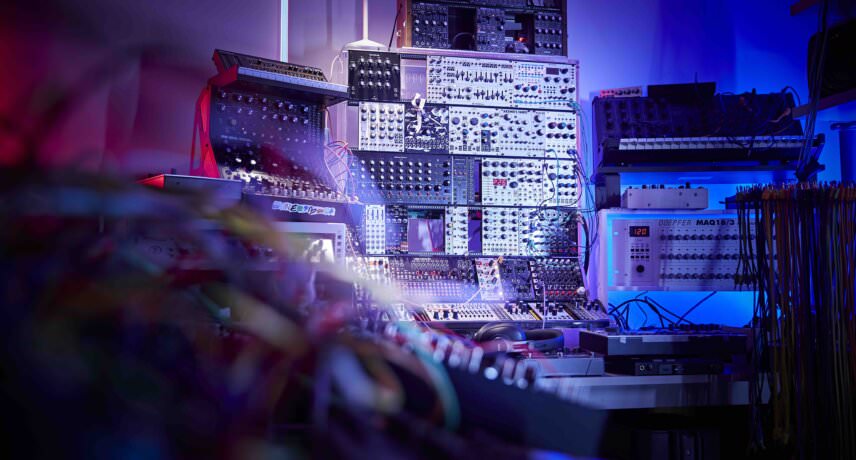


The Wall of Sound
Finding the right ‘sound’ is not a priority for me; the ‘sound’ presents itself through my interactions with my studio, I rarely labour over individually programming of specific sounds. Of course, “sound” is everything we do as musicians, but I am interested in the happy accidents, allowing chance and the machine to self-generate outcomes.
I’m an improviser, and everything I do in my studio is a fleeting moment in time. I don’t have any traditional music training and not interested in saving and recalling patterns or sounds.
Some vintage gear like the iconic Roland boxes can’t be sequenced in real-time, like the TB-303. Therefore, I’ll write a bunch of patterns, but won’t use them in any prescribed way. The same applies to drum patterns, I might write a number of patterns before I start playing, but they are selected at random whilst I perform. I also write patterns on the fly whilst I perform.
My studio is in constant flux, as I’m always trying different permutations and configurations. Each permutation yields different results and reinforces the uniqueness of each performance, especially as I don’t take patch notes or save precise settings or sequences. I tend to move through periods of time where I’m focused on certain permutations.
That’s why the whole modular paradigm really fucks with me, but in a good way as I love the challenge of designing a new modular synth configuration and exploring the different results.
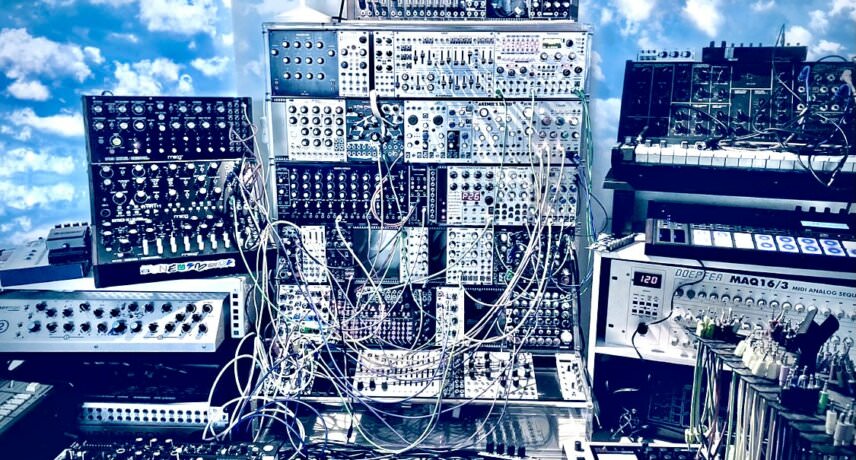


All Day I Dream About Wires
Did I take all my gear outside on a beautiful cloudy day: head in the clouds, heavenly, daydreamer or a lovely day for it?
To tell you the truth I can’t remember why I took this photo or what the intent was, although it does show more of the permanent fixtures in my studio.
Most of the gear in this photo is stuff I wouldn’t take out to perform with. The Korg MS-20 (top right) is the oldest synth I own, this one goes back to 1979 and it’s in desperate need of a thorough clean.
Every year I keep saying I’ll send it off to get serviced, but for some reason, it never happens. Could it have something to do with the Brian Eno concept of not servicing your synths as all the faults give the synth its unique character (or something like that)? Cool let’s go with that, it’s better than calling me lazy!
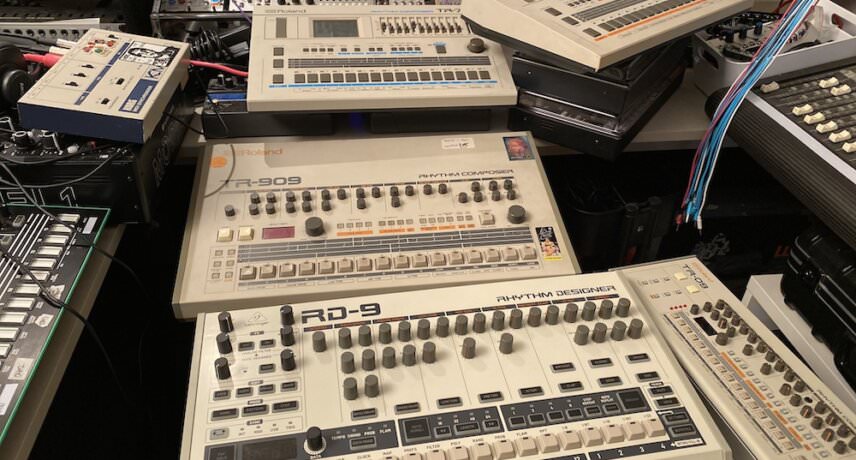


Behringer RD-9
If you think I’ve got a problem with 303s, then let’s not discuss my love of all things beige.
The 303 and 909 (and 808) have been core to everything I do as a performer and producer. Much like the 303, I’m always interested to explore a new version of the techno’s heartbeat, the 909.
Here are a few of my beige beauties. And what you can’t see in this photo is the plethora of other drum machines and Eurorack modules that also emulate the 909 in some form.
I’m still blown away by how these machines continue to be a stable of many electronic dance music styles.
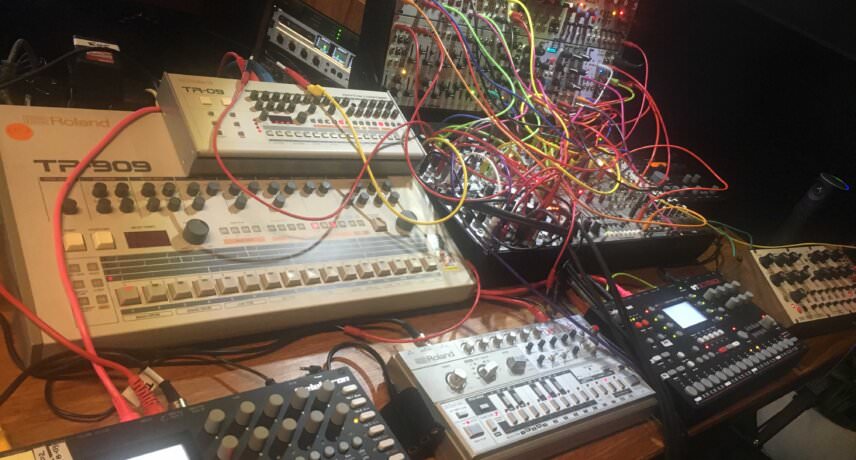


My Album Gear
Here’s the set-up I used when I recorded my album Post Acid at Carl Cox’s El Rancho studio here in Australia.
Whilst it’s not in my studio as such, it demonstrates how I literally take a small section of my studio and transport it elsewhere to record.
Considering my tracks exist as moments in time, I don’t use a computer to compose or arrange, they are all performances recorded to tape.
Chris Coe (Awesome Soundwave) suggested I come to the studio and jam out some new stuff exclusive for Awesome Soundwave. So that’s what we did – I took a bunch of gear to El Rancho and for two days I improvised with my gear whilst being recorded. After the recording session, we extracted the best bits as complete sections to form individual tracks for the album.
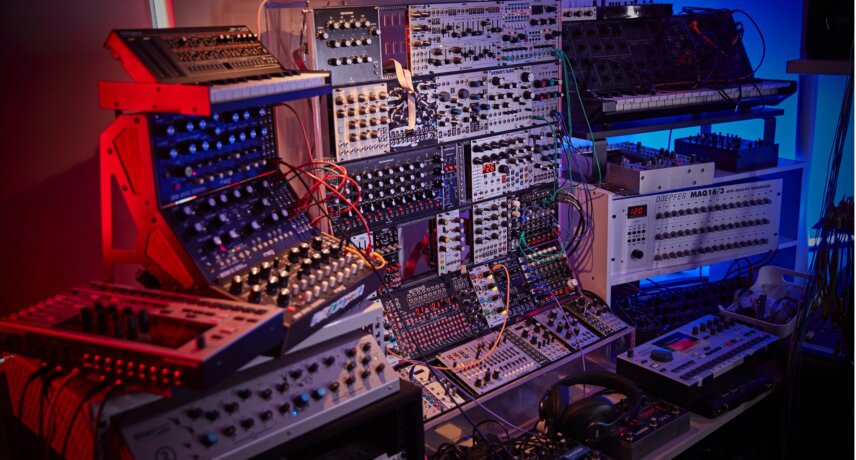


Modular Synths
Let’s talk modular synths. Yes..it can be addictive like crack especially for someone like me. Kids, that’s not an excuse. DO NOT TAKE CRACK!
The ability to design one’s synth and explore patching possibilities that are unique to an individual is just as exciting and rewarding as it is addictive.
For many years I dodged and evaded modular synthesis, even though I have been working in a very modular way since I started making music.
To quell my desire for Eurorack, I thought I could get something like a Buchla Music Easel and that would stop me from going down the Eurorack rabbit hole. How wrong was I!!
My modern modular synth journey really began when I “accidentally” bought the Intellijel Metropolis and Atlantis along with the Moog Mother-32 the day it came out. As they say, the rest is history!
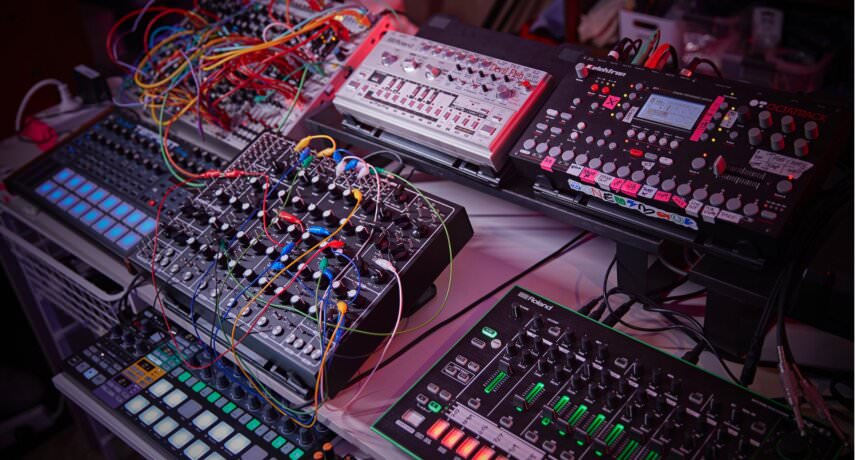


Soma Laboratory PULSAR-23 Semi-Modular Drum Machine
The Soma Pulsar 23 is the latest piece of kit I’ve purchased.
I’ve been watching it since Vlad Kreimer announced it. Whilst I wasn’t all that fussed about how it sounded when I first saw and heard the early demos, the whole design concept and how it invites an improvisation approach sold me immediately.
This machine is perfectly aligned to my approach with performance and production, everything is a moment in time, there’s no recall, no saving, no menus, no screens, no replicating the past only the future.
Vlad labels synthesizers as a “ritual object”, very true of his creation. This thing is another dimension, it really goes beyond a percussion-synthesizer-come-drum-machine-performance-palette.
Vlad is a genius and this is one of the most exciting things in music technology design besides building your own modular rack. I fucking love it!
There’s always a new way to interact with it and something new that comes from it each time you turn it on.
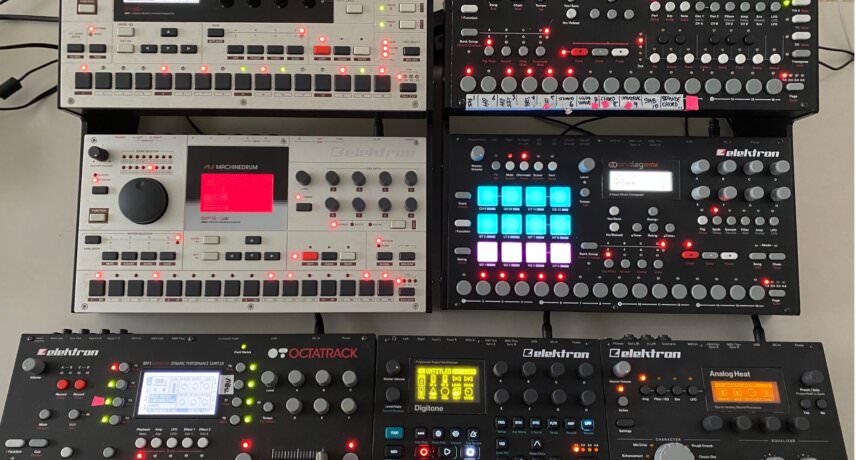


The Elektron Family
Meet the Elektron family!
I feel these are the missing link between the iconic Roland boxes of the 1980s and the new millennium. The Octatrack is in constant use, along with the Analog Heat (could do with another 5 of them!).
The Machinedrum is still one of the most versatile drum machines I’ve touched. The Analog Four is also a really immediate box that I can quickly program a sound and sequence and then insert it straight into a performance. It features a little bit across my album Post Acid.
Ahhhh the Elektron Analog RYTM (MkI), I got it new when it was released and didn’t use it for some time. Then I bricked the unit by trying to upload a .jpg file as an audio file by accident!
These days I don’t use any samples in the RYTM and re-kindled my love for its deep percussion synth engine. I think I love my Machinedrum more considering I’ve had it for way longer than the RYTM. They are different beasts, but the Machinedrum will always be my first love for Elektron
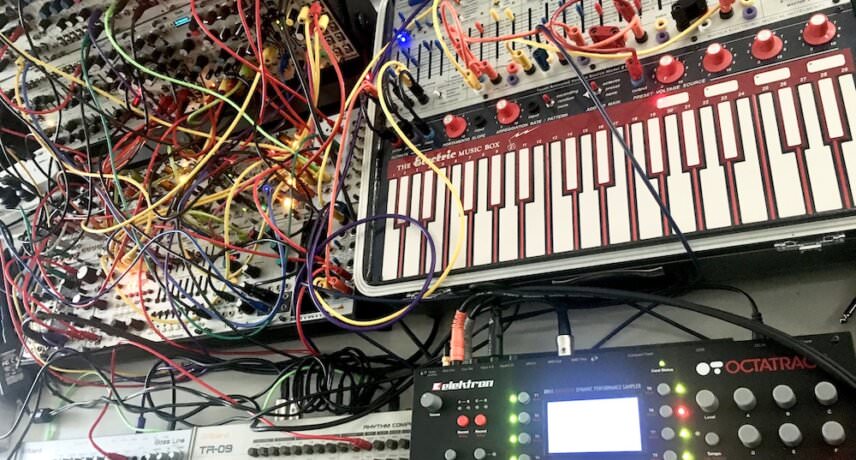


Buchla Easel
The Buchla Music Easel seems scary at first, but this thing allows for great sonic exploration.
It can produce thunderous techno bass, to 1950s sci-fi weirdness. It doesn’t try to replicate ‘another acoustic sound’, hence why the late Don Buchla was a genius.
Many people think the East-coast synth philosophy is complex, but really it’s very simple once you understand the signal and voltage path. Strangely enough, I use it a fair bit in my studio, although I don’t venture out with it all that often.
My recent performances from my studio feature it interacting with my other modular synth racks.
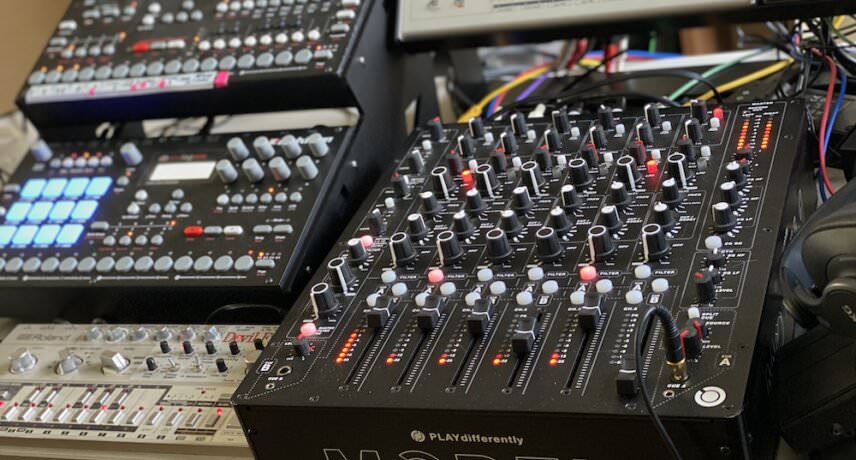


PLAYdifferently Model 1
The Model1 mixer has really impacted the way I perform recently.
I swore for 30 years I would never buy a DJ mixer… and here we are!
About 18 months ago I went on an adventure to see if a DJ mixer would work with my approach. I road-tested all the big-name mixers, but the Model1 was one that really felt like a workable performance palette for the way I work.
It’s more like an old analogue desk rather than a DJ mixer. There are no menus, no recall, no firmware, no complex routings, just pure dials.
The dual filters per channel are amazing. I use this in and out of my studio and am looking to getting another one very soon!
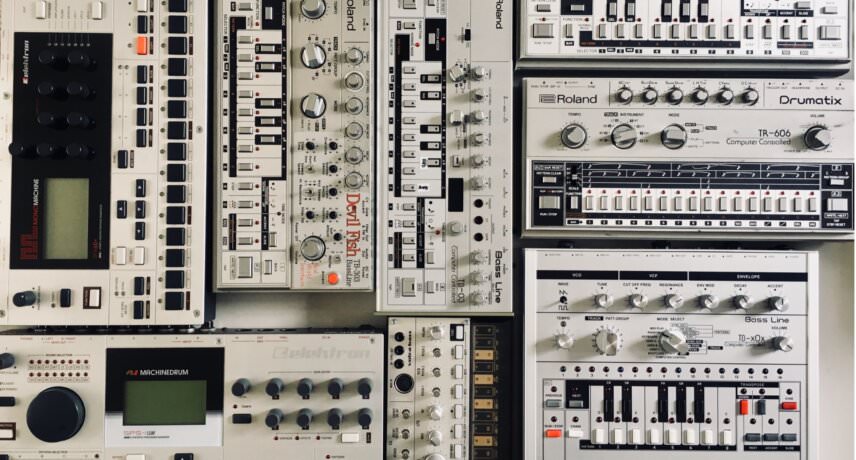


The Silver Surfers
Let’s talk about the silverware, sorry I mean 303s. I think I have about 15 t0 20 303s in some form.
Do I have a problem??! Not that I’m aware of (please send help immediately!)
I’m constantly asked what is my favourite 303, or which clone is the best. My honest answer is, I have never played with a 303 clone I didn’t like! Each one has a different quality, from how it operates and sounds, that’s why I love them all!
My first TB-303 cost me $50 Australian dollars, and it’s still the most used 303 I own.
Why the fuck are people still asking which one is the closest to the original. Are people conducting science examinations or making music?
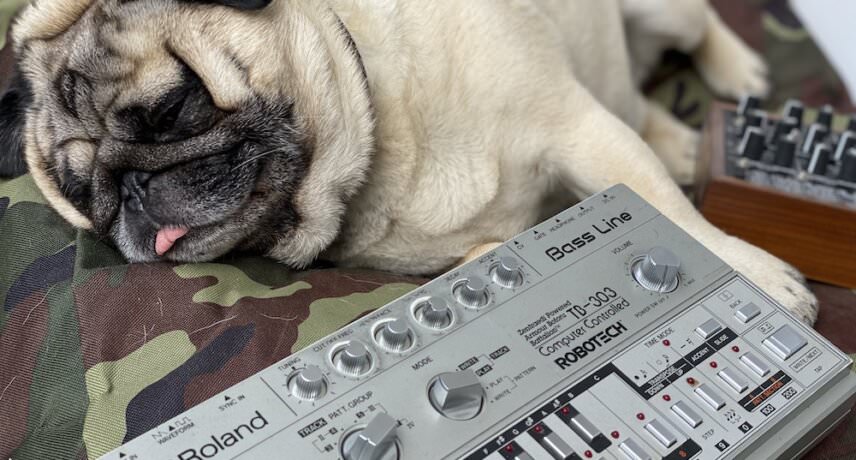


Leo the Pug
Meet Leo the pug with a penchant for acid.
He is guaranteed to get in the way when I’m recording or performing, he’s always telling me I need more 303s.
We argue a lot although I love him!
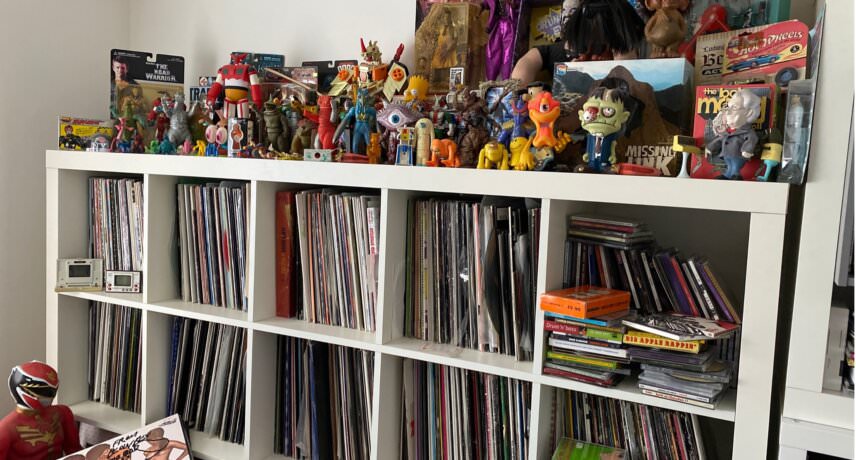


Mutant Toys!
Ever since I was a teen, I’ve been collecting mutant toys and anything that was odd, freaky or different.
I mostly purchased inexpensive toys that were in bargain bins or second hand, I didn’t collect them because they were valuable, I just liked them because they were freaky!
Now all these toys sit at the top of my record collection and have been adding to the collection ever since.
My son is 5 years old and is now becoming fascinated by the toys and the Buchla Music Easel too!
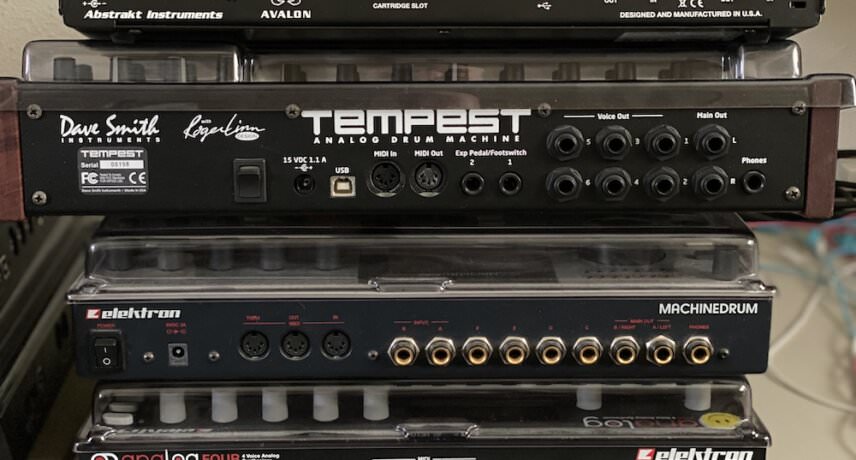


Gear on Gear!
Stack ‘em high!
I suffer from too much dust and not enough space in my studio. Occasionally I stack boxes to get them out the way whilst the creative urge takes place.
Besides, not enough attention is given to the back of drum machines and synths. There’s a lot of work that goes into the design. Let’s take a moment to ponder that for a while.
Okay that’s enough, now it’s getting a little creepy…
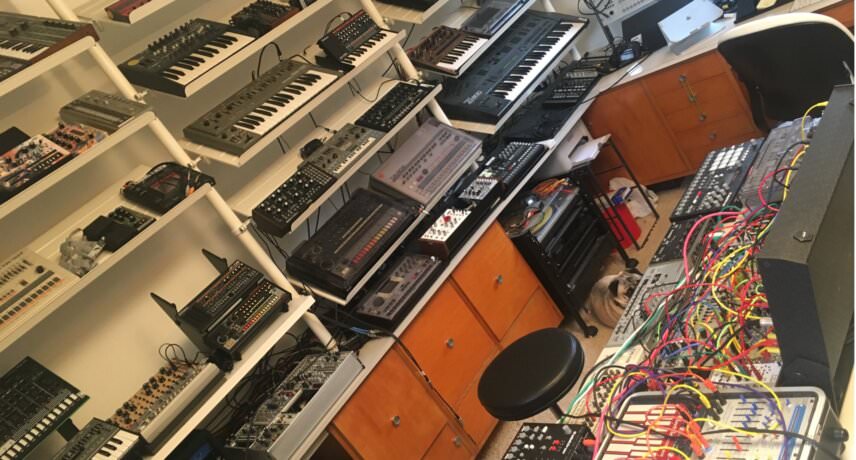


More Gear!
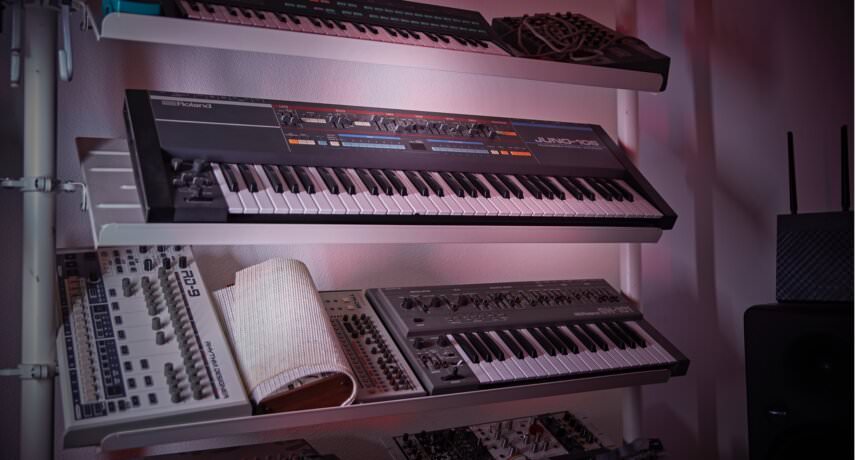


And a bit more!!
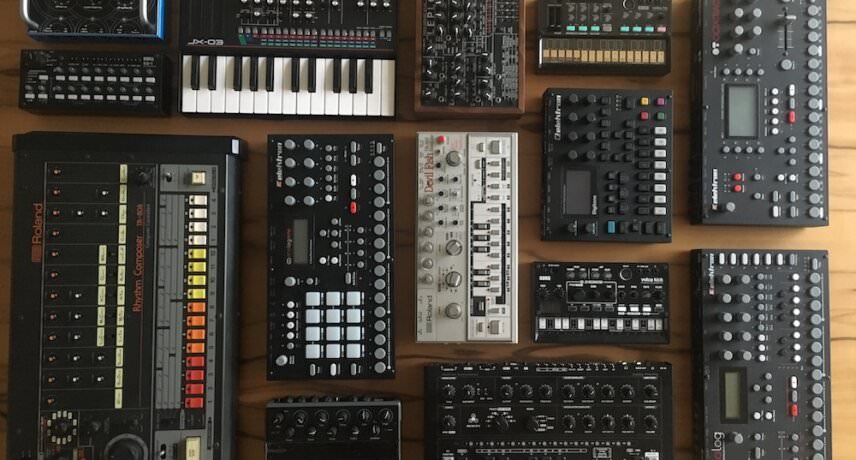


Ok just a tiny bit more…!!!
Entity Remixes (vinyl + digital) including remixes by MSTKRFT and CJ Bolland is out on Awesome Soundwave in January 2022. Listen to Post Acid (digital) out now also on Awesome Soundwave.
